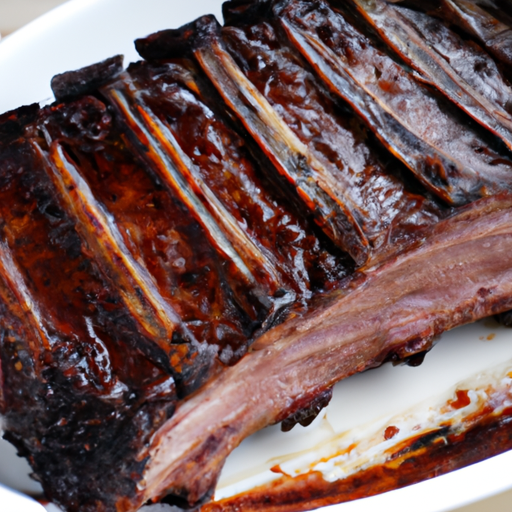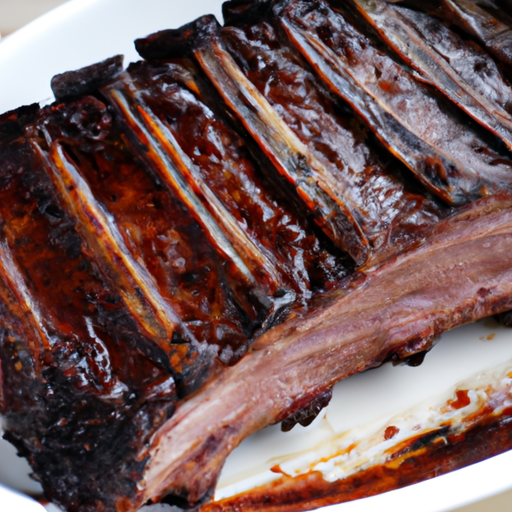Are you tired of overcooking or undercooking your beef rib? Look no further! Our “Tips for Perfect Cooking Times for Beef Rib” is here to help you achieve that perfectly cooked, succulent beef rib every time. Say goodbye to the frustration and uncertainty in the kitchen as we provide you with invaluable tips and guidelines on cooking times specifically tailored for beef rib. Whether you prefer rare, medium, or well-done, our expert advice will ensure that your beef rib is cooked to perfection, allowing you to savor every mouthwatering bite. Say hello to cooking success with our tried-and-tested tips!

Selecting the Right Beef Rib
When it comes to selecting the right beef rib, there are a few important factors to consider. First and foremost, you need to choose the right cut of beef rib that suits your preferences. Whether you prefer a bone-in or boneless rib, there are various options available to cater to your specific taste.
Another crucial consideration is the size of the beef rib. Take into account the number of guests you will be serving and the portion sizes you desire. You want to ensure that the beef rib you choose will be enough to satisfy everyone’s appetite without being excessive.
Lastly, checking the marbling of the beef rib is essential. Marbling refers to the fat that is dispersed throughout the meat, enhancing its tenderness and flavor. Look for beef ribs with even marbling, as this indicates that the meat will be flavorful and juicy when cooked.
Preparing the Beef Rib
Before you can start cooking your beef rib, proper preparation is necessary to ensure the best results. One of the first steps is to trim any excess fat from the rib. While a bit of fat can add flavor, too much can lead to a greasy end result. Trim the excess fat carefully, leaving just enough to contribute to the richness of the meat.
Next, consider the seasoning options for your beef rib. This is where you can get creative and tailor the flavors to your liking. Traditional options include salt, pepper, garlic powder, and onion powder. However, feel free to experiment with different herbs and spices to add a unique twist to your beef rib.
Additionally, it’s important to let the meat come to room temperature before cooking. This allows for more even cooking and ensures that the beef rib remains tender and juicy throughout the cooking process.
Cooking Methods for Beef Rib
When it comes to cooking beef rib, there are several methods you can choose from, depending on your preferences and the equipment you have available. The most popular methods include grilling, roasting, and braising.
Grilling is a fantastic option if you enjoy the smoky flavor and slightly charred exterior that comes from cooking over an open flame. Roasting, on the other hand, is perfect for achieving a tender and succulent beef rib with a flavorful crust. Lastly, braising involves slow-cooking the beef rib in a flavorful liquid, resulting in a melt-in-your-mouth texture.

Grilling Beef Rib
To grill a perfect beef rib, a few essential steps need to be followed. Firstly, preheat the grill to ensure even cooking and prevent the meat from sticking. This will also help achieve those beautiful grill marks on the surface of the rib.
When it comes to grilling, there are two techniques: direct heat and indirect heat. Direct heat refers to placing the beef rib directly over the flame, whereas indirect heat involves placing the rib away from the direct flame, allowing for slower and more even cooking. Consider which technique suits your desired level of doneness and adjust the heat accordingly.
Throughout the grilling process, it is crucial to monitor the internal temperature of the beef rib. This can be done using a meat thermometer inserted into the thickest part of the meat. For medium-rare, aim for an internal temperature of around 130°F (54°C), while medium should be around 140°F (60°C).
Roasting Beef Rib
Roasting a beef rib is a tried-and-true method that results in a tender and flavorful end product. To roast the beef rib, start by preheating the oven to the desired temperature. Generally, a temperature of 325°F (163°C) works well for roasting beef rib.
Using a roasting pan with a rack allows for even air circulation and ensures that the beef rib cooks evenly. This also helps elevate the rib, allowing any excess fat to drip off during the cooking process.
Basting the beef rib with pan juices or a marinade throughout the cooking time helps to keep the meat moist and infuse it with additional flavor. Additionally, it is crucial to let the rib rest for a few minutes after roasting. This allows the juices to redistribute within the meat, resulting in a more tender and succulent eating experience.
Braising Beef Rib
Braising is a fantastic cooking method for beef rib, especially if you prefer a fall-off-the-bone tenderness. To braise the rib, start by selecting a braising liquid such as beef broth, red wine, or a combination of both. The liquid will add moisture and flavor to the meat as it slowly cooks.
After choosing the braising liquid, cover the beef rib and simmer it over low heat. The low and slow cooking process allows the tough connective tissues to break down, resulting in a tender and juicy rib. The length of time required for braising will depend on the size and thickness of the rib, so be sure to check for tenderness periodically.
Determining Doneness
Determining the doneness of your beef rib is crucial to ensure it is cooked to your desired level. One of the most reliable methods is to use a meat thermometer. By inserting the thermometer into the thickest part of the rib, you can easily monitor the internal temperature. Remember, different levels of doneness require different internal temperatures.
If you prefer to gauge doneness visually, look for visual cues. For example, a beef rib cooked to medium-rare will have a warm pink center and slightly browned exterior. Medium, on the other hand, will have a more uniformly browned exterior with a slightly pink center.
Once the beef rib has reached the desired level of doneness, it is crucial to allow it to rest for a few minutes. This resting period allows the juices to redistribute, resulting in a more flavorful and enjoyable eating experience.
Serving and Enjoying
Carving the beef rib is an important step in serving and enjoying this delicious cut of meat. To carve the rib, use a sharp carving knife and slice against the grain. This will result in tender and easy-to-eat slices of beef rib.
When it comes to accompaniments and side dishes, the options are endless. Classic choices include mashed potatoes, roasted vegetables, and a fresh salad. Additionally, consider serving a flavorful sauce or gravy alongside the beef rib to enhance the overall dining experience.
Once everything is prepared and ready, it’s time to savor the flavors of your perfectly cooked beef rib. Take your time to appreciate the tenderness, juiciness, and rich flavors that this cut of meat has to offer. Enjoy each bite and share the culinary joy with your family and friends!
Common Mistakes to Avoid
While cooking beef rib is a straightforward process, there are some common mistakes that people often make. One of the biggest mistakes is overcooking the rib, resulting in dry and tough meat. Be sure to monitor the cooking time and follow temperature guidelines to avoid this pitfall.
Skipping the resting period is another mistake to avoid. Allowing the beef rib to rest before carving allows the juices to redistribute, resulting in a more tender and flavorful end result. Patience is key when it comes to cooking the perfect beef rib.
Lastly, using high heat throughout the cooking process can also lead to less-than-ideal results. Whether grilling, roasting, or braising, it’s important to maintain the right temperature and adjust accordingly to achieve the desired level of doneness and tenderness.
Tips for Perfect Cooking Times
To ensure that your beef rib is cooked to perfection, consider the following tips for perfect cooking times:
-
Use a cooking chart as a general guide: Cooking charts are widely available and provide estimates of cooking times based on the weight and thickness of the beef rib. While these charts can be a helpful starting point, it’s important to monitor the internal temperature to determine the exact cooking time required.
-
Consider the desired doneness: Different people have different preferences when it comes to the level of doneness. Keep in mind that the internal temperature will continue to rise slightly during the resting period. Therefore, it’s advisable to remove the beef rib from the heat when it is a few degrees below the desired internal temperature.
-
Test for tenderness: While the internal temperature is a reliable indicator of doneness, the tenderness of the beef rib is equally important. Use a fork to test how easily the meat separates or check for the desired level of tenderness. Adjust the cooking time accordingly to achieve the perfect texture.
By keeping these tips in mind and following the steps outlined for selecting, preparing, and cooking your beef rib, you can be confident in creating a delicious and unforgettable dining experience for yourself and your loved ones. Enjoy the process, embrace your creativity in seasoning, and savor the incredible flavors of a perfectly cooked beef rib.
